Today, we're going to take a look at a really neat East German made PP. I don't want to go into a full blown History lesson, but I do need to give you some broad strokes background so that you know what you're looking at.
At the end of WWII, American forces had occupied the German city of Suhl, where several major German arms companies had factories. However, the city was soon turned over to the Soviets as it was in their occupation zone. Well, you know those communists; why let captured and perfectly good weapons factories go to waste? It wasn't long before East Germany was established (October 7, 1949) and they soon set to producing weapons to protect the proletariat from those evil Capitalists in the West. Being communists, they collectivized the various factories into one entity and named it the "Volkseigener Betrieb (VEB) Ernst-Thälmann-Werk" or, in English, the "State owned Ernst Thaelmann Factory", Ernst Thaelmann being the leader of the German communist party from 1925 until his imprisonment in 1933 (executed in 1944). One of the factories that fell under this umbrella was located in Zella-Mehlis, just north of Suhl. During the war, it had been owned by Walther and one of the weapons made there was the PP pistol. So, among other things, the plant started producing new PP's some time in the 1950's Nobody knows exactly how many were made but the highest recorded serial number to date is in the 19K range. It is assumed that these were made for police issue. The one we are going to look at today is one of the first thousand made. Are you still with me? OK, lets get to work.
As we look at this pistol, we'll throw a 1960's Walther PP in some of the pictures for comparison. As an aside, even though the Walther pistol is marked as being made in West Germany, it was actually manufactured by Manurhin in France for Walther. Why? Because the machinery that Walther had been using to make the pistols was now being used by the East Germans to make their pistols! So, you could say that the Eastie made example is more Walther than the Westie Walther. Confused yet?
We'll start with the left side:
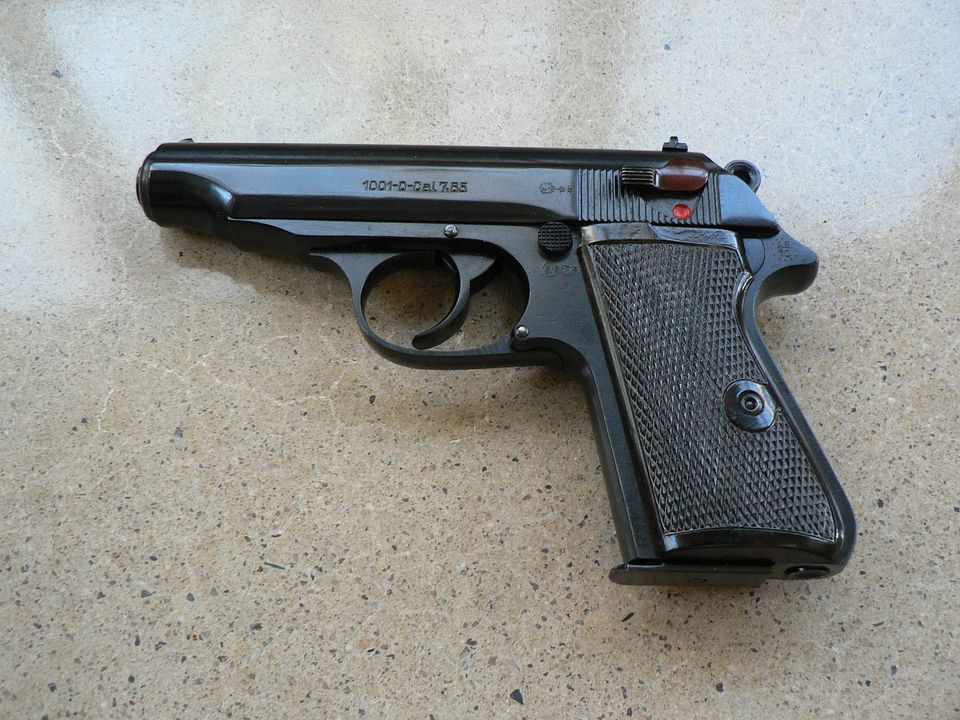
The East Germans never gave the pistol a name, just a code 1001-0. It's marked on the left side of the slide along with the caliber 7,65 (.32 Auto). For the most part, the metal is very nicely polished and the entire pistol is nicely blued with a deep luster.
Inspection and firing proofs are on the slide and frame:

At the rear is the final acceptance proof:
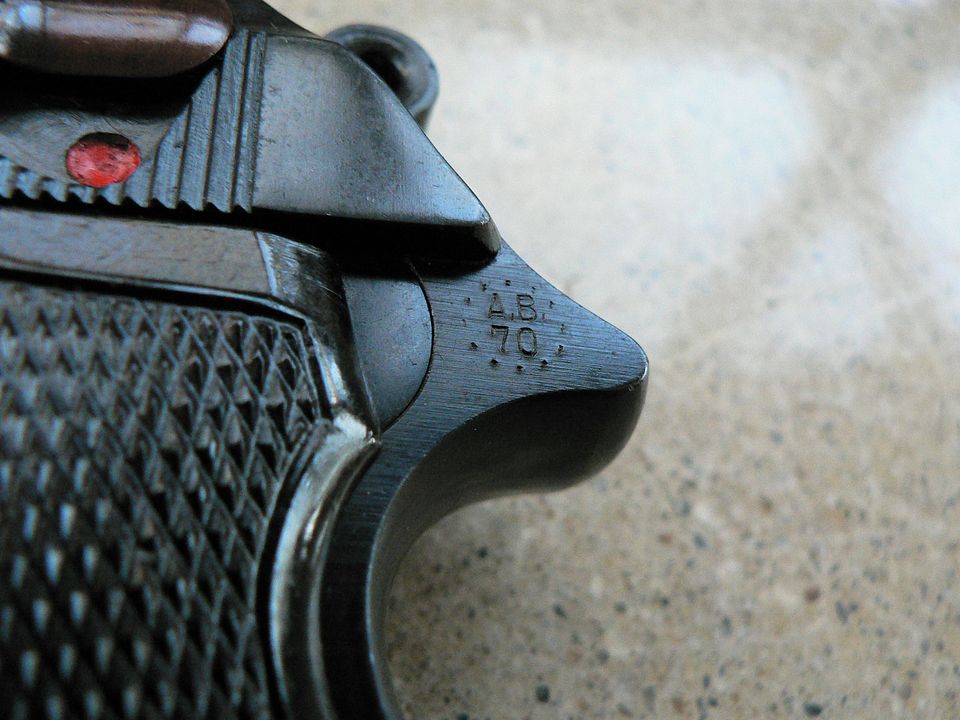
The only markings on the right side are the serial number on the slide and frame:
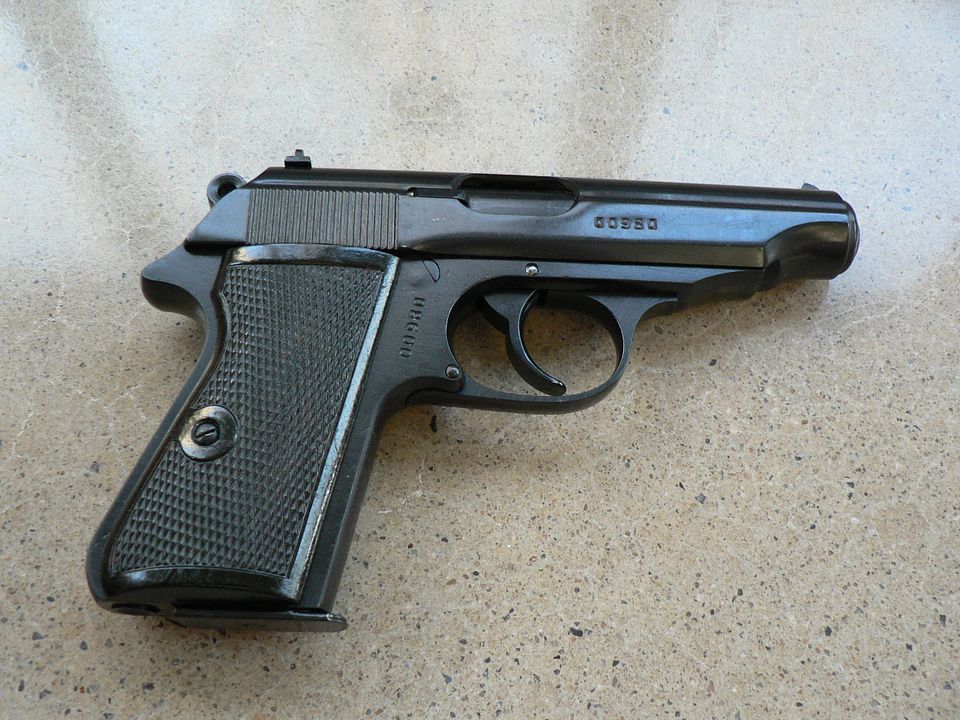
Compared to a .380 Walther from the 1960's:

Overall, it compares very well to the Walther. The finish is the typical Warsaw Pact deep black and, because the metal was nicely polished, it has a lot of shine to it. It's only when we start looking closely at certain details that you see the Eastie is a little crudely made when compared to its Western cousin.
For example, compare the machining in the hole in the hammer (DDR on the left):
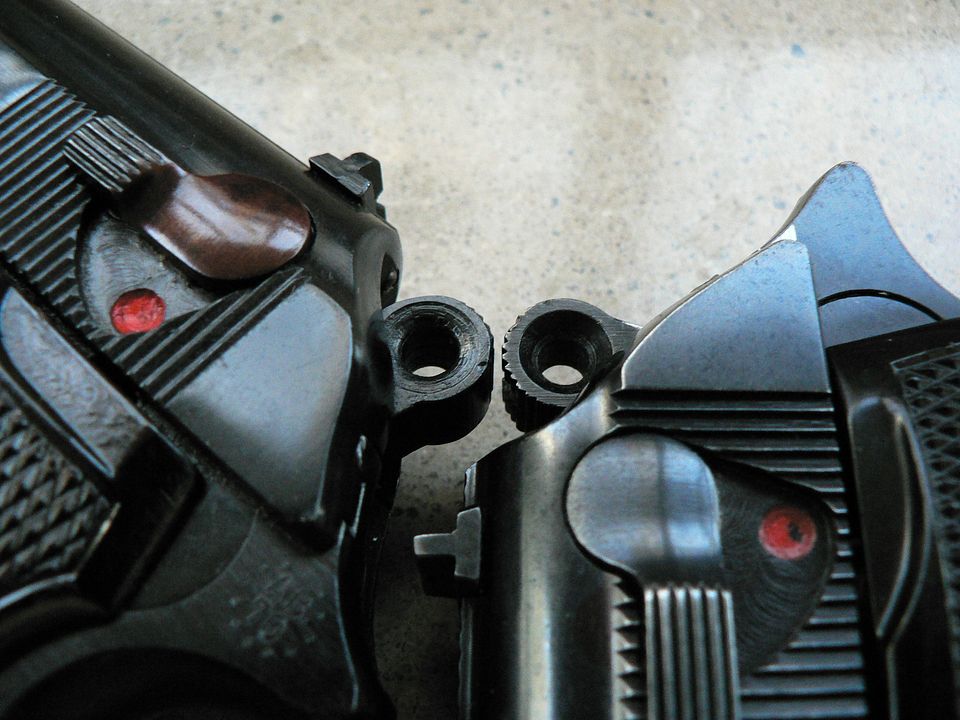
Magazine release button, East German first:
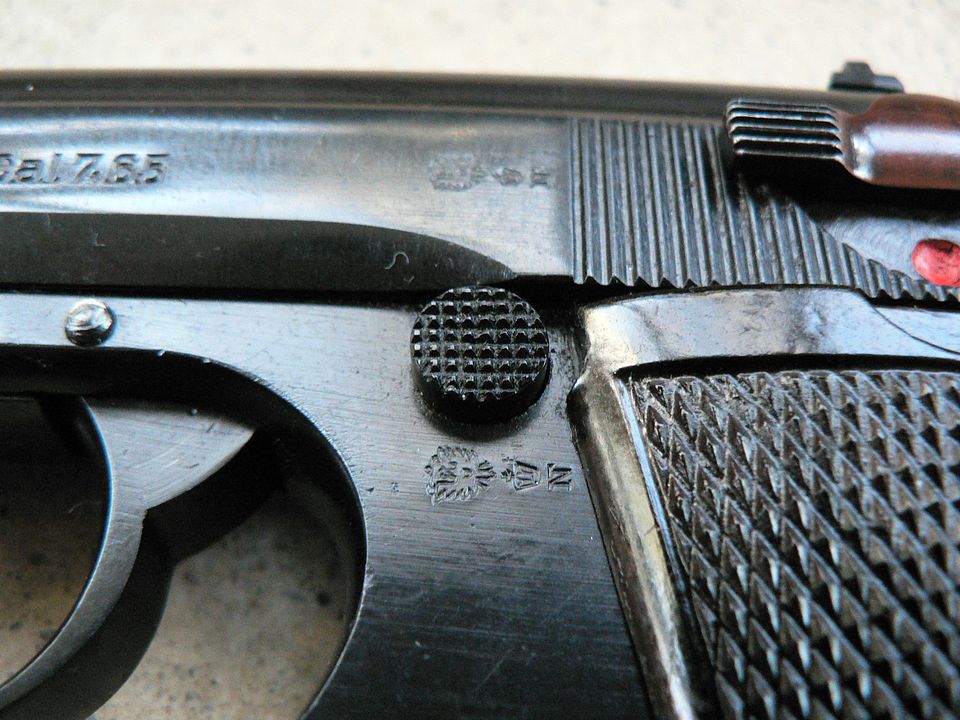
West German:
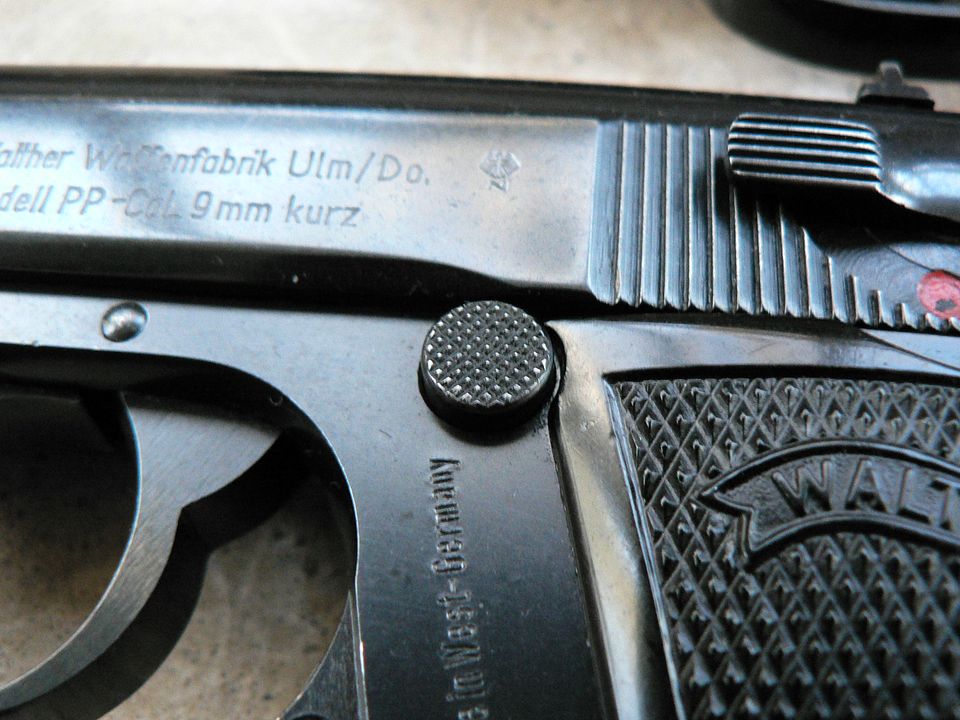
Notice that the slide serrations are a little finer on the Westie too.
The antiglare strip atop the slide on the DDR example (at left) is thinner and nowhere near as nicely executed:
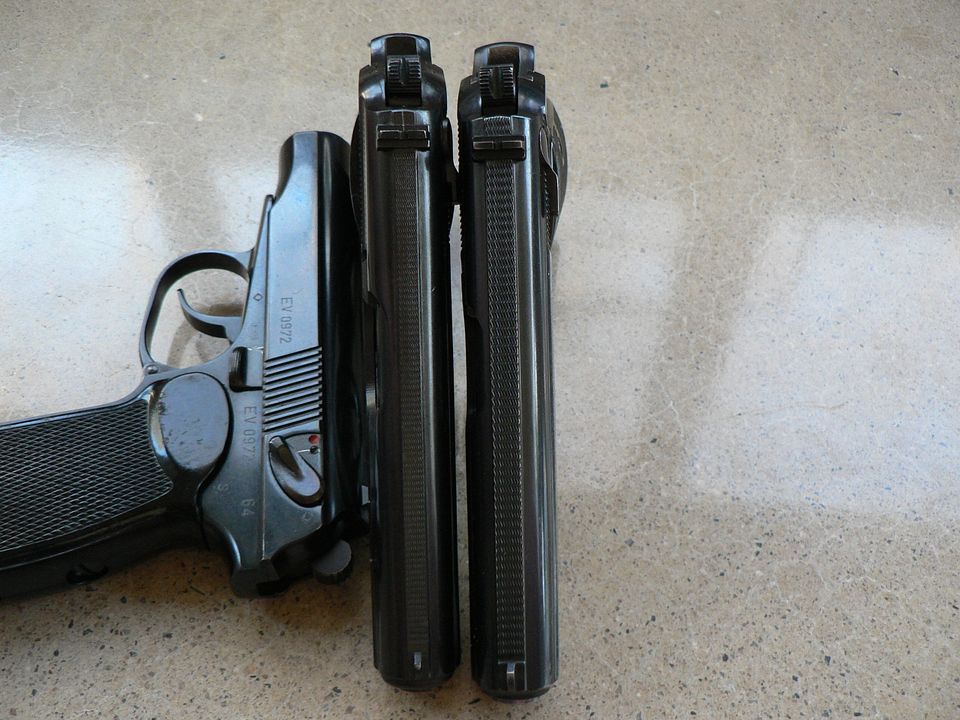
Detail. DDR at left:
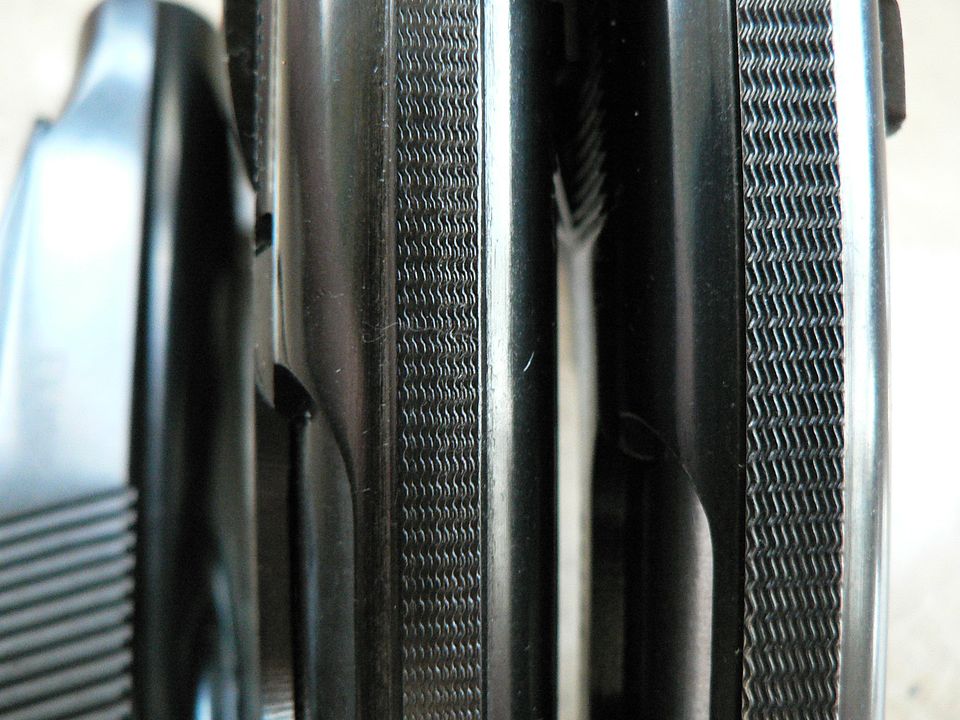
The magazine is numbered to the pistol:

If it looks a little funky to you, that's because it has a film of that wonderful commie cosmoline on it. You can see it glooped in the holes too. As I have no intention of ever firing this, I see no reason to remove it. The internals and the bore (not chrome lined) are also coated in cosmoline.
The grips are a dark brown bakelite with a hint of red flecks and swirls mixed in:
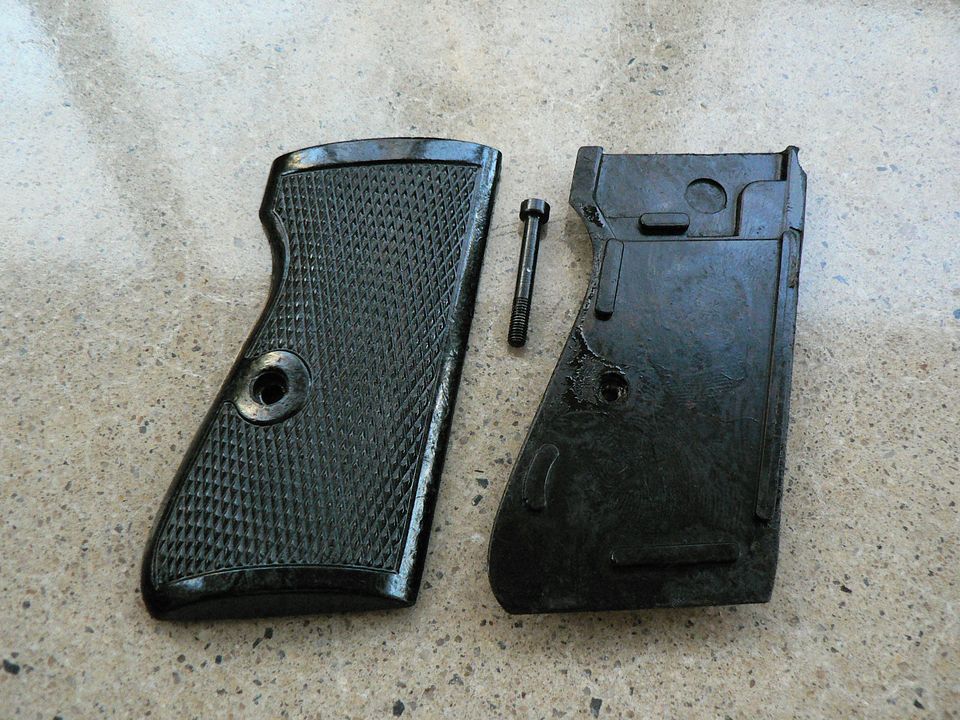
Of course, the "Walther" banner has been deleted.
We'll continue in the next post.
 Win a FREE Membership!
Win a FREE Membership!